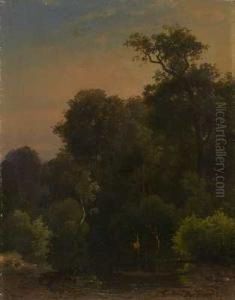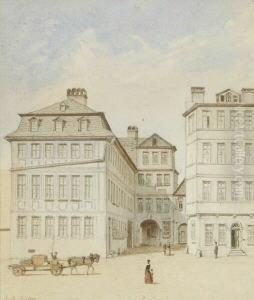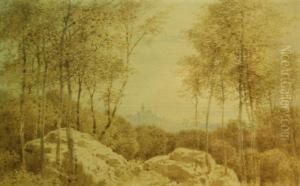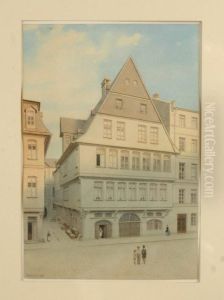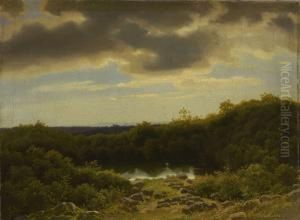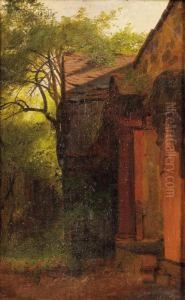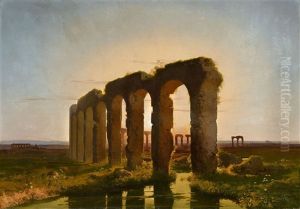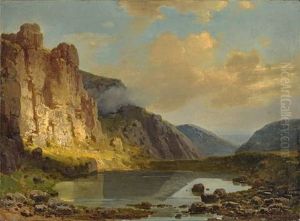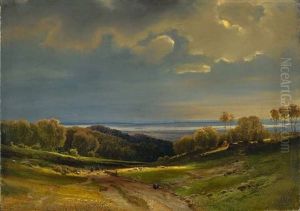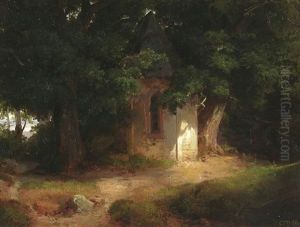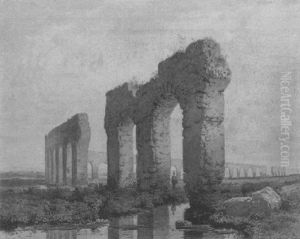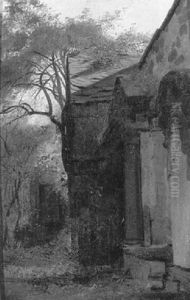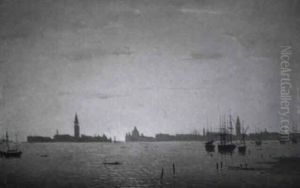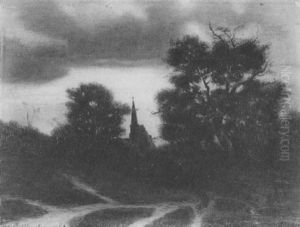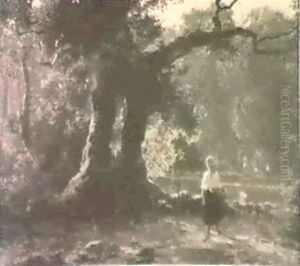Karl Theodor Reiffenstein Paintings
Karl Theodor Reiffenstein was a German artist, born on October 13, 1820, in Frankfurt am Main. His artistic journey began under the tutelage of his father, Johann Friedrich Carl Reiffenstein, who was himself a painter and illustrator, as well as a friend of the famous writer Johann Wolfgang von Goethe. Karl Theodor later studied at the Städelsches Kunstinstitut in Frankfurt, where he honed his skills and developed his style.
Reiffenstein was primarily known as a landscape painter, and he also worked on etchings. His works were characterized by their meticulous detail and the romantic sensibility of the time. He drew inspiration from the picturesque regions of Germany, including the Rhine Valley and the Taunus mountains, capturing the beauty and atmosphere of these landscapes with a particular focus on the interplay of light and shadow, which was a hallmark of his style.
Throughout his career, Reiffenstein traveled extensively, which allowed him to study different environments and further influence his approach to landscape painting. He took trips to Italy and Switzerland, where the natural beauty of these countries had a profound impact on his work. His travels contributed to his evolution as an artist, as he incorporated elements of the Italian and Swiss scenery into his repertoire.
In addition to being a painter, Karl Theodor Reiffenstein was also a teacher. He influenced a number of young artists by imparting his knowledge and passion for art. His contributions to the Frankfurt art scene were significant, as he helped to cultivate a community of artists who shared his enthusiasm for the natural landscape.
Karl Theodor Reiffenstein passed away on March 14, 1893, in his hometown of Frankfurt am Main. His legacy lies in his picturesque landscapes that continue to be appreciated for their tranquil beauty and technical skill. While he may not be as widely known as some of his contemporaries, his work remains a testament to the romantic spirit of 19th-century German art.
